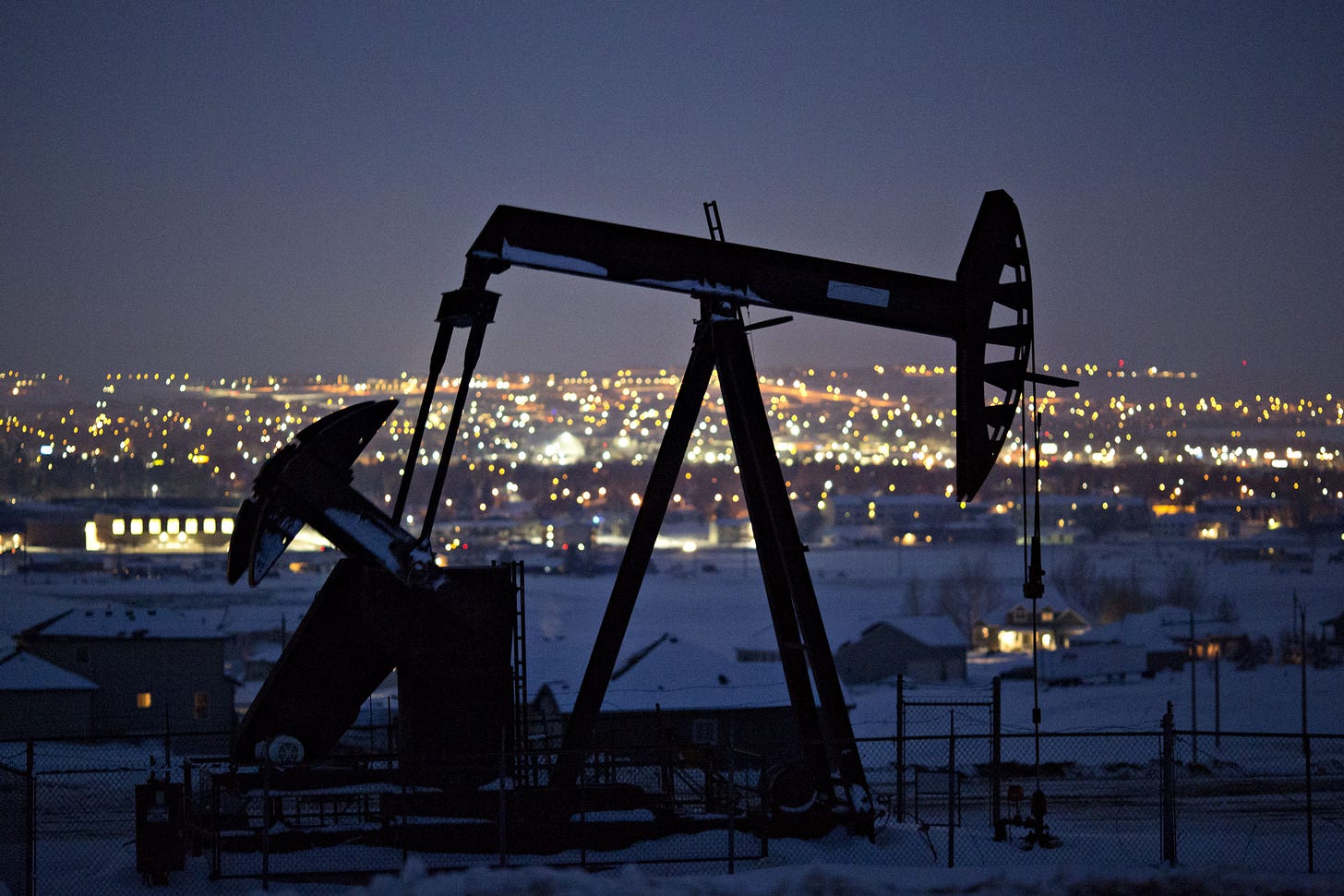Energy Dominance: America’s New Shale Revolution
They said fracking was finished. Now a new shale technology is set to drive year-after-year gains in U.S. production, powering the free world, slashing our trade deficit, and securing our allies.
by Rod D. Martin
November 20, 2025
Perhaps you’ve heard. The same experts who told you America and the world were reaching “peak oil” — the point at which production supposedly must drop forever — have decided we’re now at “peak fracking”.
Why? Because they lack the imagination needed for innovation. Fortunately, ExxonMobil does not. It’s shredding their argument. It’s about to blow U.S. production sky high.
Get ready. There’s a lot of opportunity in that.
For most of my lifetime, all we heard was “peak oil”, which (you benighted souls must understand) was “settled science”. The obvious arguments to the contrary — that rising prices drive innovation, and that regulation is its enemy — were laughed off.
I know: I made those arguments. Long before there was any such thing as fracking.
The “experts” saw no reason why, in 2008 when oil reached a stratospheric $147.50 per barrel, that rise wouldn’t continue to $250 and ultimately on to infinity. We would have to shift to wind power (but never nuclear!), they told us: even Russia and the Middle East would soon run dry. We would have to get used to rolling blackouts and declining standards of living. The age of energy, and with it modern civilization and population sizes, was over.
Then a funny thing happened. American entrepreneurs did what they always do when prices make innovation profitable: they blew up the “settled science.”
As I’ve been saying forever, there is far more oil, coal, and natural gas in the ground than we’ve ever used in all of human history. The constraint is not the size of God’s creation; it’s whether we’re allowed to invent the tools to use it. Fracking, as Alex Epstein says, is “very likely the single most beneficial technological development of the last 25 years,” precisely because it turned “once useless rock” into the world’s most important source of reliable energy.
First with shale gas. Then with shale oil. Then with an LNG and refining build-out that turned America from the world’s biggest energy importer into the world’s largest producer, its third largest exporter of petroleum, and its top exporter of natural gas.
Now comes a fourth turn of the wheel. Not a new field. Not some miracle discovery. Something much more transformative: turning what used to be refinery trash into an economy-altering asset.
Welcome to America’s new shale revolution.
From “Inevitable Decline” to Record Production
In 2008, going into the Global Financial Crisis, America was the world’s largest oil importer and a permanent ward of foreign producers. We “exported” $700 billion a year to our enemies, and as we saw twice in the 1970s, we lived at their mercy.
But if we’ll get out of its way, the market solves most problems. When oil got expensive enough, innovation became profitable. “Settled science” said American production could only drop, forever. Yet between 2009 and 2019, U.S. crude production jumped from roughly 5.4 million barrels per day to over 12.3 million — an increase of about seven million barrels per day in a decade, or an average 700,000 barrels per day of new supply every single year.
In human terms, cheap shale gas alone has saved American consumers more than half a billion dollars every single day compared to the old price regime. The Gasland crowd wasn’t just wrong on the geology; they were wrong on the economics and the morality.
That’s what a real technological revolution looks like.
In “America: The World’s Energy Powerhouse,” I laid out how this flipped the entire global map. Instead of sending hundreds of billions of dollars each year to hostile petro-states, the world is sending that money to us. The energy tributary now flows toward Houston and the Gulf Coast, not Caracas and Moscow.
Even with a lower rig count, production keeps climbing. In the Permian, rigs are down significantly from their peak — but oil output is up roughly a million barrels a day. That’s not magic. That’s technology: longer laterals, smarter completions, and now a quiet revolution in the one part of fracking nobody was thinking about — the “sand” itself.
The New Shale Revolution
Hydraulic fracturing is conceptually simple. You drill a horizontal well. You pump water, chemicals, and sand downhole at enormous pressure. The rock cracks. The sand gets shoved into those cracks to prop them open — proppant — so the oil and gas can flow.
For years that proppant was literal sand. Then some producers upgraded to ceramic beads: stronger, more uniform, more expensive.
Now ExxonMobil, Chevron, and others have opened a new chapter: lightweight, synthetic proppant made from petroleum coke, a refinery by-product that used to be treated as waste.
That matters. A lot. Here’s why.






